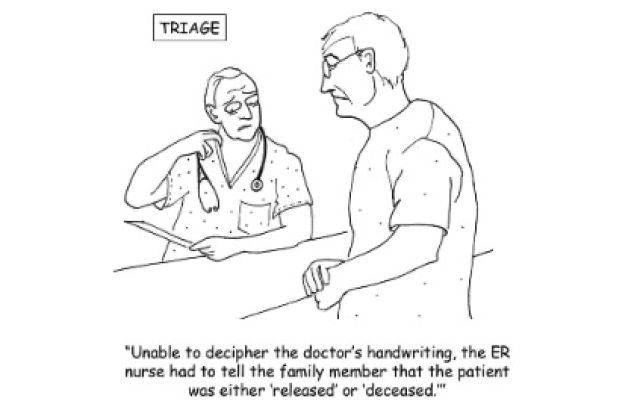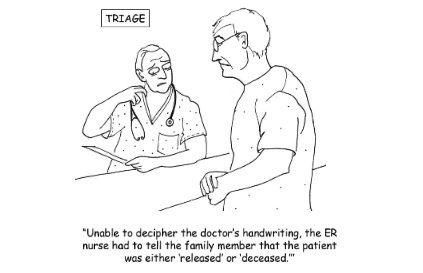How to Approach UMAT Section Two - Understanding People Construct
What is assessed by UMAT Construct 2?
Posted: May 07, 2017
How to Approach UMAT Section Two - Understanding People Construct
As a result of its often intuitive questions and responses, section two is typically considered to be the ‘lightest’ of the three components of the UMAT. And while it may be true that section two is usually the most understandable section for students just beginning their preparation, this subjective natures also makes it an particularly pesky topic to train for. In contrast to sections one and three, section two is typically more difficult to improve in, with fewer techniques and methods that one can employ to attack questions. This reality has two important implications. Firstly, if you are pressured for time and trying to cram as much UMAT study as you can into a short period, you may find that it is worth prioritising sections one and three, as students are usually more likely to achieve greater improvement in these areas. Secondly, however, if are not strapped for time, you may find that mastering section two gives you a significant edge over other students. Precisely due to its more relatable content, many students do neglect section two in their UMAT training; spending time on this area can therefore afford you a vital advantage.
What is assessed by section two?
Empathy
Section two is designed to assess a few core qualities that medical schools desire in potential students. Foremost among these is empathy – your ability to understand how other people feel in certain situations, which are often difficult and/or unpleasant. Common question types you will see may look as follows:
- How is X most likely to react to what Y has said?
- What could X say that to best improve the situation?
- Which of the following responses would be least likely to make Y feel better?
These are stock standard section two questions, and they require you to place yourself in the shoes of the person in the scenario. The key distinction to be aware of when answering these questions is that you must imagine how the character is feeling in their situation, not how you would feel in their situation. If this is not something that comes naturally to you, it is often helpful to use the stimulus material as something of a reading comprehension. Look at what the person has said throughout the question, how they’ve reacted to others comments, what things seem to be important to them and what comments have upset or affected them. If you aren’t a person who reasons well emotionally, your next best option is to use the stimulus as evidence and try to rationally predict a person’s thoughts/feelings based on what they’ve already said or done.
Are you judgmental?
Another key quality that is looked for in section two (as well as in the interview process) is your ability to be non-judgmental, particularly regarding people handling difficult health or social circumstances. Questions may be specifically designed to tempt you into making assumptions about the reasons behind an individual’s actions – it is vital that you try to be as reasonable and ‘politically correct’ as possible in these situations. For example, if you are faced with a question about someone with an eating disorder, and an answer option seeks to assign blame to that person for their condition, you can almost be certain that that option is incorrect. Modern medical practice has made a dramatic shift away from placing blame on patients for their own conditions (which may often be resultant from their behaviour), and toward giving patients’ the benefit of the doubt.
Emotional Intelligence through Vocabulary
One common question type in section two involves selecting a word that best describes a character’s thoughts, feelings or beliefs. Answer options will typically be one word each, all of which will be some form of synonym. For example, your four optics may be ‘happy’, ‘ecstatic’, ‘overjoyed’ and ‘satisfied’. Your command of the English language will be vital for these questions, which really come down to how well you understand the nuances between different synonyms. A good way to prepare for these questions is to make a vocabulary list of 10-15 basic emotions (e.g. happiness, anger, sadness, fear, etc.) and list 5 synonyms for each of these words. You should then be able to understand the subtle distinctions between each of those synonyms, so that you could differentiate between them in a question.
Common Question Types
There are three basic question structures that are utilised within section two:
- Doctor-patient interactions
- Familial and/or social interactions
- Personal reflections
Doctor-patient interactions may include a third character, such as a family member of a patient, or an allied health professional. These questions often revolve around delivering bad news, handling the concerns/fears of patients and how you would behave as a doctor in a difficult scenario. Familial/social interactions are often of a similar nature, and will offer up challenging scenarios from everyday life. Examples may include dealing with a friend who is going through an emotional situation and disputes between parents and children.
Personal reflections are a third question type. Unlike the interaction scenarios, which involve dialogue, reflections are usually written as a paragraph in first-person. These passages usually involve memories, reminiscing on the narrator’s past or descriptions of what it is like to suffer from/live with a medical condition. As always, empathy is crucial in handling such questions.
Final Tips for UMAT Section 2
As discussed, section two is usually the hardest question to study for. If you are just starting out your preparation and only have a few months left, it may therefore be most beneficial to devote the majority of your time to UMAT sections one and three, where you are more likely to make significant ground. However, you should not neglect section two entirely. Many universities have minimum section score requirements – if you don’t get above a certain score in each section, you may not be able to gain admission, regardless of your overall percentile mark. As such, do your best to give section two some time, if only to familiarise yourself with the question structures, and give yourself the best possible chance to succeed.


